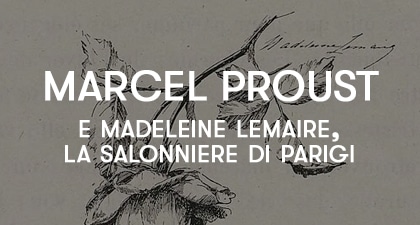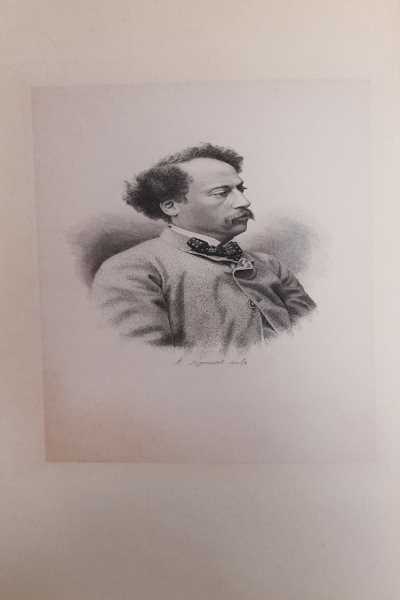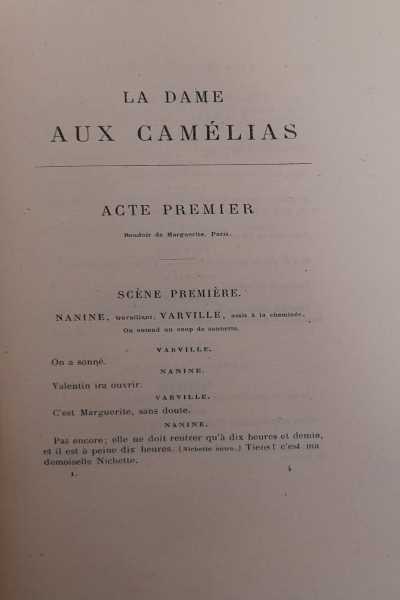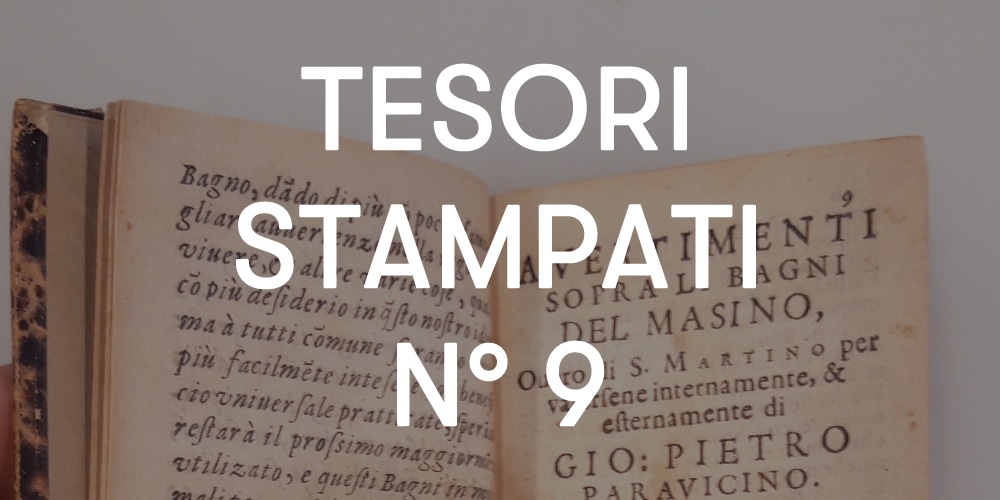
The volumes of the library of the Castle of Ermenonville continue to give us new emotions. We have already dedicated two articles to this precious collection of small masterpieces for passionate bibliophiles, enriched by their illustrious origin and the ex libris of Prince Constantin Radziwill. And here comes a edition (unfortunately incomplete: it stops at volume VI) of the theatrical works of Alexandre Dumas Fils, which brings us an unexpected surprise.
Madame Madeleine: the Salonnière of Paris

The edition is that of the Théatre complet de Al. Dumas Fils, published in Paris by Michel Lévy Frères éditeurs in 1868. As is often the case with the volumes from the library, this is a limited edition. On the paper before the title page, we find: “Tiré à 52 exemplaires sur papier de Hollande N°26. Exemplaire de…” and here, with an autograph dedication, “Madame Madeleine Lemaire Hommage de son tout dévoué A.D.F.” (translated: “Printed in 52 copies on Dutch paper no. 26. Copy of… Madame Madeleine Lemaire Tribute from her devoted A.D.F.”).
The name of Madeleine Lemaire opens a world to us and again brings us into the orbit of Marcel Proust, already so present in the history of this library as the close friend of the son of Prince Radziwill, Leon.

Born the daughter of Baron Joseph Habert, a painter, at 19 she was already exhibiting her portraits at the Salon. In 1870, at the age of 25, Madeleine married Camille Lemaire. However, her talent did not stop at the artistic field: over time, Madeleine built, at number 31 Rue Monceau, what in the 1890s would be considered one of the most influential artistic and social salons in Paris. And in the biographies, it is precisely the friendship (or possibly the relationship) with Alexandre Dumas Fils that opens the doors to the young salonnière into the cultural elites of the capital: so you can imagine the excitement of discovering our dedication.
And Marcel Proust?
On May 11, 1903, in the Figaro, an article signed “Dominique” appeared titled “La cour aux lilas et l’atelier aux roses” (translated: “The Lilac Courtyard and the Rose Workshop”): it describes a soirée set in the atelier-salon of Madeleine Lemaire, one of her famous Wednesday gatherings, with the crowd of guests spilling out into the garden, including (somewhat dull) lists of all the celebrities and members of the Faubourg Saint-Germain present, all in awe of the talented hostess surrounded by her famous floral watercolors (no wonder, as Dumas Fils said of her: “c’est elle qui a créé le plus de roses après Dieu” (translated: “she is the one who created the most roses after God”)).

A small stage hosted performances by the most famous actors of the time, from Rejane and Coquelin to Sarah Bernhardt, or the concerts of Camille Saint-Saëns, Reynaldo Hahn, or Jules Massenet. In his enthusiasm, our Dominique (who, of course, is none other than Marcel Proust) goes perhaps excessively overboard in his praise: the house at 31 Rue Monceau “est la demeure, et ce hall situé dans un jardin, l’atelier, d’une personne étrangement puissante […] dont le nom signé au bas d’une aquarelle est plus recherché que celui d’aucun autre peintre, et l’invitation plus précieuse que celle d’aucune autre maîtresse de maison: j’ai nommé Madeleine Lemaire” (translated: “it is the residence, and this hall situated in a garden, the atelier, of a strangely powerful person […] whose name signed at the bottom of a watercolor is more sought after than that of any other painter, and the invitation more precious than that of any other hostess: I have named Madeleine Lemaire”).
Between Friendship and Artistic Understanding
After all, Marcel owes much to the friendship of Madeleine Lemaire. He crossed the threshold of the legendary salon at the age of 21 in 1892, and here in 1893, he would meet two key figures in his life: the pianist Reynaldo Hahn and Robert de Montesquieu.

In 1896, Madeleine illustrated the first edition of Les Plaisirs et les Jours: in the preface, Anatole France describes the book as “tout parfumé des fleurs dont Madeleine Lemaire l’a jonché de cette main divine qui répand les roses avec leur rosée” (translated: “All fragrant with the flowers of which Madeleine Lemaire has sprinkled it with this divine hand that spreads roses with their dew”).
And when Proust began his Recherche, the people he met at 31 Rue Monceau would be transformed into some of the characters of his masterpiece: Leon Radziwill is one of the models for Robert de Saint-Loup, Robert de Montesquieu is the Baron de Charlus. And with her penchant for being called “la Patronne” by her loyal followers and for labeling those who did not bow to her prestige as “boring,” Madeleine Lemaire lives on immortally in the legendary Madame Verdurin.
If you want to browse or purchase the Théatre complet de Al. Dumas fils (volumes I-VI), you can find it in our online library by clicking HERE.








